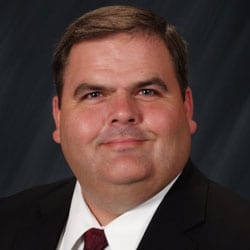Podcast: Download (16.1MB)
Subscribe: RSS
 Professor Mark Alan Wright reflects on a number of Mesoamerican practices and their possible connection with the Book of Mormon, including “day-keepers,” Shamanism and divine investiture, taking the countenance of a god by wearing deity masks, and the Maya calendar system and prophecy. For Dr. Wright’s presentation on Nephite Daykeepers, see this YouTube video.
Professor Mark Alan Wright reflects on a number of Mesoamerican practices and their possible connection with the Book of Mormon, including “day-keepers,” Shamanism and divine investiture, taking the countenance of a god by wearing deity masks, and the Maya calendar system and prophecy. For Dr. Wright’s presentation on Nephite Daykeepers, see this YouTube video.
Mark Alan Wright earned his BA in Anthropology at UCLA and his MA and PhD in Anthropology (with a subfield of specialization in Mesoamerican Archaeology) from UC Riverside. His dissertation is entitled “A Study of Classic Maya Rulership.” He regularly conducts research in Mexico, Guatemala, Honduras and Belize. Dr. Wright is Assistant Professor of Ancient Scripture at Brigham Young University.
This interview appears here by courtesy of the Interpreter. This views expressed in this interview do not necessarily represent the views of FAIR or of the Church of Jesus Christ of Latter-day Saints.

Dr. Wright pointed out some interesting Mesoamerican connections to the Book of Mormon. It needs to also be pointed out that these types of connections to the Book of Mormon are not limited to Mesoamerica but are found throughout all North America. For example, the shaman with the masks, representing deity, are also found throughout North America in the medicine man.
There is also an interesting Book of Mormon link throughout all America in the feathered headdress of the shaman or medicine man. The Brass Plate record, as found in the Book of Mormon, relates the story of Moses raising the serpent on the pole as representing the coming of Jesus Christ. Also, Facsimile 1 in the Book of Abraham, which surely would have been included in the Brass Plates, shows a bird as representing Jehovah (Abraham 1:15-16). This bird symbol of Deity is common throughout all North America. The Feathered Serpent is the perfect symbol of the combining of Jehovah and Jesus Christ. The feathered headdress worn by the medicine man is a symbol of his authority from Deity.
There are many more such links between the Native Americans and the Book of Mormon throughout all of North America, not just Mesoamerica.
Probably the most obvious Ancient American connection to the Book of Mormon, and the most overlooked, are the mounds. Earthen towers were common among the Nephites. They were used for watchmen, for places of defense and refuge, and for places to build temples. Captain Moroni “caused the title of liberty to be hoisted upon every tower which was in all the land.” (Alma 46:36) These raised towers and defense works were constructed of earth with timber pickets on top. Towers, or mounds of earth, were the Nephites primary defense strategy. They dug up these heaps of earth in “all the cities throughout all the land which was possessed by the Nephites.” (Alma 49:2-4, 50:1-2, 53:4). It is the basic military advantage of the “high ground.”
The eastern half of North America is covered with ancient mounds. There are over 700 in the state of Louisiana. Every county in the state of Georgia has known ancient mounds, and they are found in every state east of the Mississippi.
Archaeologists claim that there is no archaeological evidence in America for the Book of Mormon. Ironically, the primary question amongst American archaeologist is, “Who were the mound builders?”
Theodore:
The problem with using the Mound Builders has possible authors of the Book of Mormon is that those people had no written language or other high culture that could produce a society and written records like the one we have.
See here for more information:
http://www.bmaf.org/node/264
Mike,
As archaeologists say, “Absence of evidence is not evidence of absence.” Mormon explained that Ammaron and he had hidden the written records, because if they were “to fall into the hands of the Lamanites the Lamanites would destroy them” (Mormon 2:17, 6:6). The literate Nephite Civilization was destroyed and the book destroying Lamanites survived. We should therefore not expect to find written records until we find Mormon’s cache.
However, we do find intricately engraved copper plates and beautifully carved stone boxes at the archaeological site at Etowah, in north west Georgia. Incidentally, the name Etowah is a Cherokee word meaning “High Tower.” As to the level of civilization of the mound builders, we read the following from the lead archaeologist of the excavations at Poverty Point in north east Louisiana:
The Book of Mormon is very clear that they built earthen towers in every city in the land of the Nephites. Where these Nephites lived, after the days of Captain Moroni, these mounds should still exist, and they do.